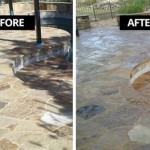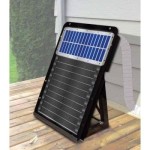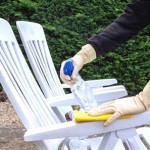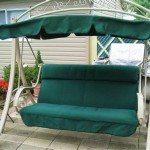Crafting a Durable and Decorative Tile Patio Table Top
A tile patio table top presents an excellent opportunity to personalize outdoor spaces while providing a durable and weather-resistant surface. The process, while requiring careful planning and execution, is achievable for individuals with basic DIY skills. This article details the steps involved in constructing a tile patio table top, covering material selection, preparation, tiling techniques, and finishing touches necessary to create a long-lasting and aesthetically pleasing addition to outdoor furniture.
Prior to commencing the project, a comprehensive understanding of the necessary tools and materials is essential. This allows for efficient workflow and minimizes potential setbacks. The selection of appropriate tiles, based on aesthetic preference and climatic considerations, plays a vital role in the overall project success. Furthermore, meticulous surface preparation is crucial to ensure proper adhesion and structural integrity.
Selecting Appropriate Materials
The selection of materials is a crucial decision that impacts the longevity and aesthetic appeal of the tile patio table top. The frame, substrate, tiles, adhesive, grout, and sealant all contribute to the overall durability and visual impact of the final product. Each component must be selected carefully based on the project's specific needs and environmental factors.
The table frame serves as the structural foundation. Options include metal, wood, or composite materials. Metal frames, particularly those treated for rust resistance, offer durability and stability, especially in humid climates. Wood frames provide a natural aesthetic but require regular sealing and maintenance to prevent rot and insect infestation. Composite materials present a low-maintenance alternative, offering resistance to weathering and decay. The frame must be robust enough to support the weight of the substrate, tiles, and any items placed on the table.
The substrate provides a stable and even surface for tile adhesion. Cement backer board is the preferred material for outdoor applications due to its moisture resistance and dimensional stability. Plywood, while less water-resistant, can be used if properly sealed and protected from the elements. The substrate should be cut to the exact dimensions of the table frame, ensuring a flush and secure fit. It is important to seal all the edges of the substrate with a waterproof sealant to prevent moisture penetration.
Tile selection is largely dictated by personal preference and the desired aesthetic. However, certain tile types are better suited for outdoor use. Porcelain tiles are highly durable, frost-resistant, and available in a wide range of colors and styles. Ceramic tiles are a more affordable option but may be more susceptible to cracking in freezing temperatures. Natural stone tiles, such as slate or granite, offer a unique and rustic look but require regular sealing to maintain their appearance and prevent staining. Mosaic tiles provide an opportunity for intricate designs and customized patterns.
Thin-set mortar, specifically formulated for outdoor use, is the recommended adhesive for securing the tiles to the substrate. It provides a strong and waterproof bond, resisting the expansion and contraction caused by temperature fluctuations. Pre-mixed adhesives are convenient but may not offer the same level of durability as powdered thin-set mortar, which requires mixing with water or a latex additive. The chosen adhesive should be compatible with both the tile and substrate materials.
Grout fills the spaces between the tiles, providing a seamless and waterproof surface. Epoxy grout is highly resistant to stains, mildew, and chemical damage, making it an ideal choice for outdoor environments. Cement-based grout is a more economical option but requires regular sealing to prevent water absorption and discoloration. The grout color should complement the tiles and the overall design of the table top.
A sealant provides a final layer of protection against moisture, stains, and UV damage. Penetrating sealants are absorbed into the tile and grout, creating a water-repellent barrier. Topical sealants form a protective coating on the surface, enhancing the sheen and providing added resistance to scratches and abrasion. The sealant should be specifically formulated for outdoor use and compatible with the chosen tile and grout materials.
Preparing the Surface and Applying Tiles
Proper surface preparation is critical for achieving a long-lasting and aesthetically pleasing tile patio table top. The substrate must be clean, level, and free from any debris that could interfere with adhesion. The tiling process requires careful planning and precise execution to ensure a uniform and professional finish.
Begin by thoroughly cleaning the substrate with a mild detergent and water. Remove any dirt, grease, or loose particles that could compromise the bond between the substrate and the adhesive. If using plywood, apply a waterproof sealant to all exposed edges and surfaces. Allow the sealant to dry completely according to the manufacturer's instructions. Cement backer board typically does not require pre-sealing but should still be cleaned and free of dust.
Dry-laying the tiles onto the substrate is a crucial step that allows for planning the tile arrangement and identifying any potential issues before applying the adhesive. Arrange the tiles according to the desired pattern, using tile spacers to maintain consistent grout lines. Adjust the tile placement to ensure that the pattern is centered and balanced within the table frame. This is also the time to consider how edge tiles will be cut and placed.
Mix the thin-set mortar according to the manufacturer's instructions, using a mixing paddle attached to a drill. Add water or a latex additive gradually, until the mortar reaches a smooth, peanut butter-like consistency. Avoid adding too much water, as this can weaken the bond strength. Allow the mortar to slake for 5-10 minutes, and then remix before applying.
Apply the thin-set mortar to the substrate using a notched trowel, holding the trowel at a 45-degree angle to create ridges in the mortar. The size of the notches should be appropriate for the size and type of tile being used. Apply the mortar in small sections, working one area at a time to prevent it from drying out. Avoid applying mortar to the entire surface at once.
Press each tile firmly into the mortar, using a slight twisting motion to ensure good contact. Use tile spacers to maintain consistent grout lines and prevent the tiles from shifting during the drying process. Periodically check the level of the tiles with a level, making adjustments as needed. Remove any excess mortar from the tile surfaces with a damp sponge.
Allow the thin-set mortar to cure completely according to the manufacturer's instructions, typically for 24-48 hours. Avoid walking on or disturbing the tiles during the curing process. Once the mortar is fully cured, remove the tile spacers.
Grouting and Sealing for Protection and Aesthetics
Grouting and sealing are the final steps in completing the tile patio table top. Grouting fills the spaces between the tiles, creating a waterproof and aesthetically pleasing surface. Sealing protects the tile and grout from moisture, stains, and UV damage, ensuring long-term durability and enhancing the overall appearance.
Mix the grout according to the manufacturer's instructions, adding water gradually until the grout reaches a smooth, creamy consistency. Avoid adding too much water, as this can weaken the grout and make it more susceptible to cracking. Allow the grout to slake for 5-10 minutes, and then remix before applying. Protect the surrounding area with drop cloths to prevent grout stains.
Apply the grout to the tile surface using a grout float, holding the float at a 45-degree angle to force the grout into the spaces between the tiles. Work in small sections, applying the grout diagonally across the tile surface to ensure that all the grout lines are completely filled. Remove any excess grout from the tile surfaces as you work.
After allowing the grout to set for the recommended time, typically 15-30 minutes, begin cleaning the tile surface with a damp sponge. Rinse the sponge frequently in clean water. Remove as much grout haze as possible, but be careful not to remove any grout from the grout lines. Use a grout sponge or a microfiber cloth to remove any remaining grout haze.
Allow the grout to cure completely according to the manufacturer's instructions, typically for 24-72 hours. Avoid exposing the grout to water or harsh chemicals during the curing process. Once the grout is fully cured, apply a sealant to protect the tile and grout from moisture, stains, and UV damage. Follow the manufacturer's instructions for applying the sealant, ensuring that the entire surface is evenly coated.
Apply multiple coats of sealant, allowing each coat to dry completely before applying the next. This will provide maximum protection and enhance the longevity of the tile patio table top. Consider using a sealant specifically formulated for outdoor use, as these sealants typically offer better resistance to weathering and UV damage.
Regular cleaning and maintenance will further extend the life of the tile patio table top. Wipe up spills promptly to prevent staining, and clean the surface regularly with a mild detergent and water. Avoid using abrasive cleaners or harsh chemicals, as these can damage the tile and grout. Reapply sealant every 1-2 years, or as needed, to maintain its protective properties. By following these steps, a durable and decorative tile patio table top can be created, enhancing the outdoor living space for years to come.

Diy Tile Tabletop Seeking Lavender Lane

Build An Outdoor Table With Tile Top And Steel Base Family Handyman

Diy Tile Tabletop Seeking Lavender Lane Patio Table Furniture Makeover

51 Diy Outdoor Table Top Ideas Perfect For Your Patio Or Deck Bird

Diy Penny Tile Table Top Jennifer Rizzo

Make Your Own Ceramic Mosaic Table Top

How To Make An Outdoor Tile Coffee Table Using Leftover Tiles

Stone Top Patio Table Diy Family Handyman

Our Custom Patio Table Madness Method

How To Design A Mosaic Table Top With Ceramic Tiles Feltmagnet
Related Posts








